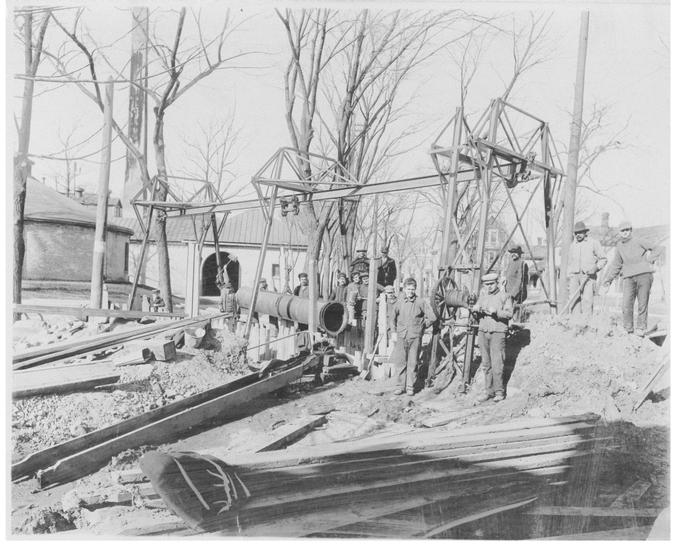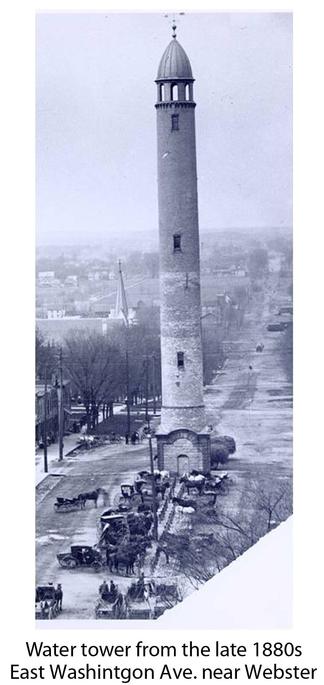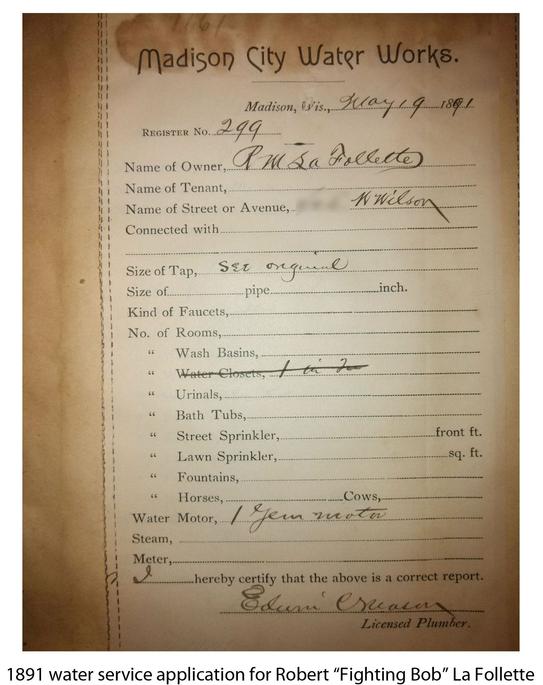Unearthing Madison's history
posted

Fighting for safe water
It's hard to imagine that in a city surrounded by lakes, access to safe water was a concern from the beginning. But as Madison's population boomed in the 1860s and 70s, diseases like typhoid and cholera were becoming prevalent. It would take a UW Madison engineering student to help people understand why.
Magnus Swenson saw that most Madison homes had private wells and sewage cesspools, often located close to each other. He theorized that there was a connection between outbreaks of illness and the use of private water wells, so he set out to prove it with his senior thesis entitled, "The Chemical Analysis of Madison Well Waters."
Swenson tested 52 private wells around the city and found 87% of them were contaminated by organic matter, ammonia, nitrites and chlorides coming from sewage. His professor, Roland Irving, insisted in an 1880 Wisconsin State Journal article that most of Madison's well water was unfit to drink.
"...no words can exaggerate the terrible condition of a large number of our wells, nor the evils that are likely to come on the place in the future from faulty drainage and vitiated water supply."
 The study immediately encountered pushback from some of Madison's most outspoken citizens. Prominent Madisonian General Simeon Mills fought the findings, claiming, "Madison would be better off never to have heard of Swenson, for the senses of sight and taste are sufficient to prove whether or not water is fit for drinking."
The study immediately encountered pushback from some of Madison's most outspoken citizens. Prominent Madisonian General Simeon Mills fought the findings, claiming, "Madison would be better off never to have heard of Swenson, for the senses of sight and taste are sufficient to prove whether or not water is fit for drinking."
Madison's public waterworks is born
Gradually, however, public opinion shifted to support the creation of a separated sewage system and waterworks. As several private companies stepped forward to offer proposals for a municipal water system, newly-elected council member John Heim fought to keep the system public.
On August 6th, 1881, the council voted to make the water works a public entity, and John Heim was appointed its first superintendent. In May of 1882, contracts were signed, and by October, the waterworks was installed. It cost $36,000 for a new pumping station and 12 miles of main pipe.
Since then, Madison Water Utility has grown to support a population of over 236,000, operating a vast system that includes 22 deep water wells, 828 miles of water main, and more than 8,000 fire hydrants. MWU pumps more than 10 billion gallons of water a year to homes, businesses, schools, and hospitals across the City of Madison, as well as Maple Bluff, Shorewood Hills, Town of Madison, Blooming Grove and Town of Burke.

Subscribe to Water Utility News & Alerts Updates
Archive
Categories
- All Posts »
- History (8)
- Our People (11)
- Serving the Community (29)
- Sustainability (27)
- Water quality (15)
Tags
- aquifer
- Arbor Hills
- AWWA
- Barrymans
- Blackhawk
- Booster Pump Station 106
- CAP
- capitol
- chloride
- chlorine
- Clean Water
- Climate Change
- Common Council
- Community
- Conservation
- cost
- cost of water
- Customer Care
- Customer service
- disinfection
- drinking water
- Education
- efficiency
- energy
- engineering
- environment
- EPA
- Fire
- Fire protection
- Flooded houses
- freezing
- Frozen pipes
- Got Water
- Got Water?
- graywater
- Greywater
- healthy kids
- History
- hydration
- Imagine a Day Without Water
- Inclusive workplace
- Infrastructure
- John Heim
- John Muir
- Lake View Hill
- lakes
- lead pipes
- lead service replacement program
- leaks
- Lou and Peter
- Lou and Peter Barryman
- Low Income
- Mad City Tappers
- Mad Women on Tap
- Madison
- Madison City Channel
- Madison Kipp
- Madison Municipal Services
- Madison Water
- madison water utility
- Madison Water Utility
- Main breaks
- Michael Edmonds
- MWU
- New well
- North Madison
- O'Dea
- Operation center
- Paterson
- Perfluorinated compounds
- PFAS
- pipes
- Placemaking
- plumbing
- Private Wells
- Project H2O
- Project Home
- Projects
- Public Works
- pumping
- Recycled water
- Remucal
- Reservoir Park
- Road Salt
- Safety
- shower
- Southeast
- stormwater
- study
- Survey
- Sustainability
- Tap Water
- Tapping Team
- TeamCity
- Technology
- Testing
- Testing
- Toilet Rebate
- UW
- UW Madison
- Wanda Fullmore Youth Internship Program
- water
- Water
- water bill
- Water board
- Water conservation
- Water Main
- Water main flushing
- Water Mains
- Water Quality
- Water Quality Report
- water safety
- Water supply
- Water Tower
- Water Utility
- Water Wagon
- Water Works
- WaterSense
- watershed
- Well 14
- Well 31
- Well 8
- Wellhead Protection
- West Madison
- west side
- Winter
- Winter Safety
- Winterization
- WiSaltWise
- Women's
- Women's History Month
- World War II
- WWA
